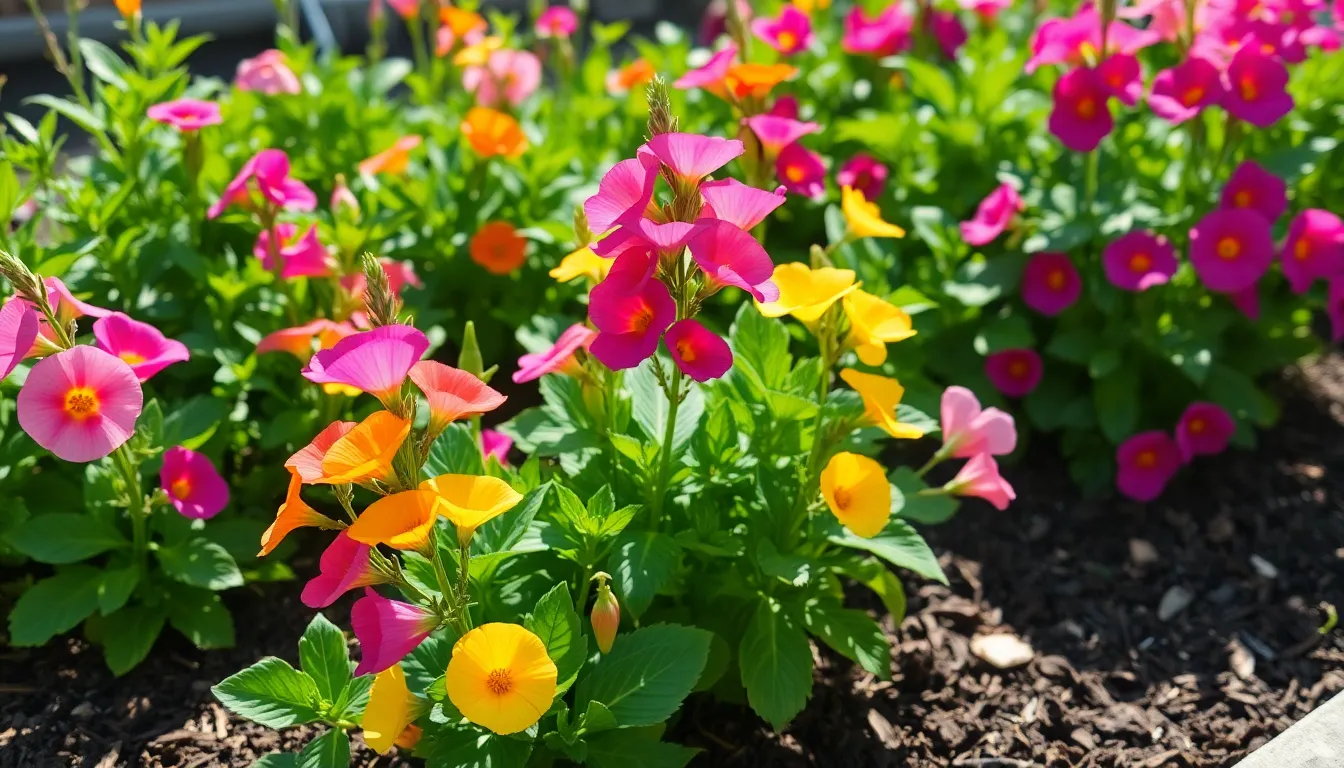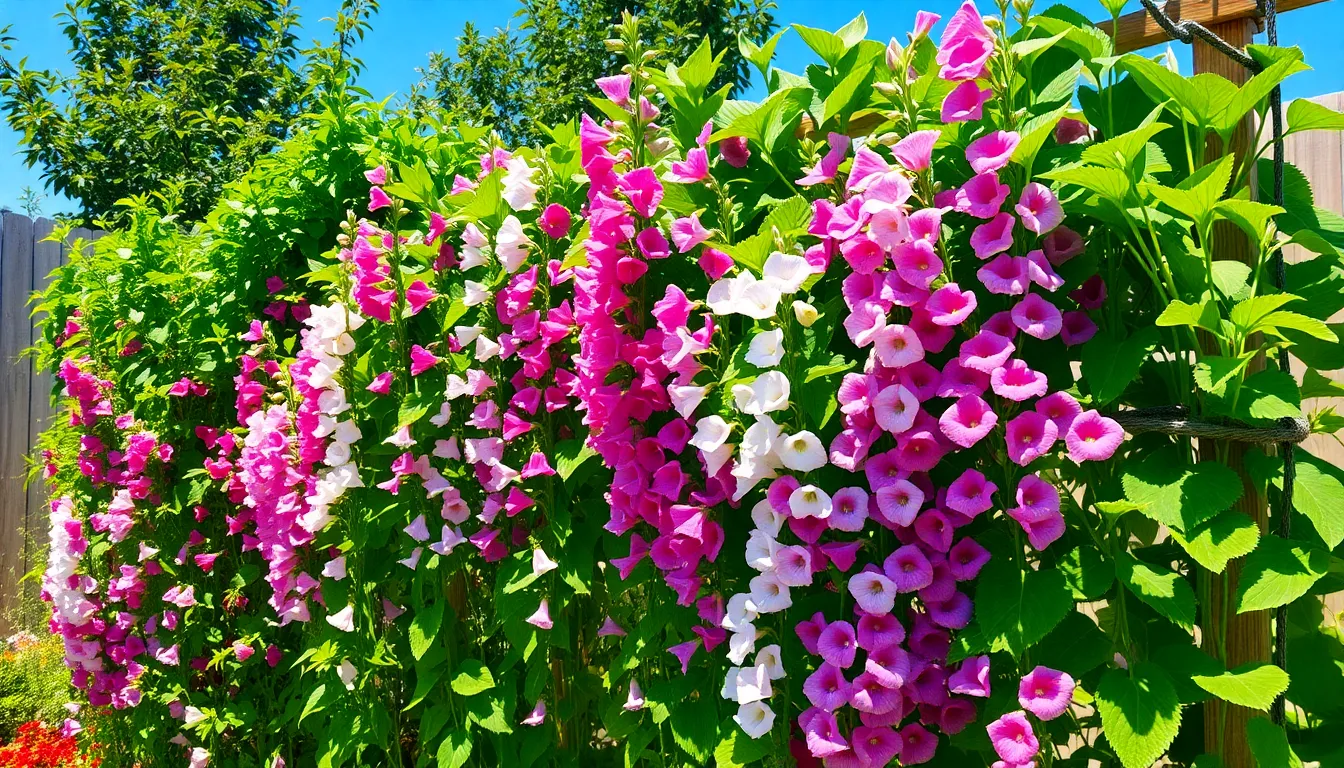If you’re looking to add a splash of color and a touch of whimsy to your garden, sweet peas are the way to go. These delightful blooms not only bring a sweet fragrance but also charm every passerby. But like any diva, they require a bit of TLC to truly thrive.
Don’t worry; caring for sweet peas isn’t rocket science. With a little know-how and a sprinkle of humor, anyone can cultivate these beauties. From choosing the right spot to mastering the perfect watering technique, this guide will transform you into a sweet pea whisperer. So grab your gardening gloves and let’s dig into the delightful world of sweet pea plant care—because who wouldn’t want a garden that smells as sweet as it looks?
sweet pea plant care
Sweet pea plants, known scientifically as Lathyrus odoratus, belong to the legume family. These annual flowering plants thrive in various climates, producing vibrant blooms and a delightful fragrance. An understanding of their growth habits helps in designing a garden space that supports their needs.
Optimal growth occurs in cooler temperatures, typically between 55°F and 70°F. These plants prefer well-drained soil with a pH between 6.0 and 7.0. Sweet peas benefit from full sun exposure, requiring at least six hours a day of direct sunlight for best results.
Planting should take place in early spring for a summer bloom. Seeds germinate quickly, often within 7 to 14 days when planted properly. Spacing plays a crucial role in their growth; spacing plants 8 to 12 inches apart ensures adequate air circulation and access to nutrients.
Regular watering is essential. While sweet peas prefer moist soil, they shouldn’t sit in waterlogged conditions. A deep watering approach every week encourages strong root development and supports blooming. Fertilization, using a low-nitrogen fertilizer, promotes healthy flowering without excessive leaf growth.
Sweet pea plants also require structural support due to their climbing nature. Utilizing trellises or netting encourages vertical growth and enhances air circulation. Regular pruning of spent flowers enhances blooming for an extended period.
Recognizing pests helps in managing plant health. Aphids and snails may attack sweet peas; implementing organic pest control methods keeps them safe. Proper care ensures sweet peas contribute beauty and fragrance throughout the gardening season.
Ideal Growing Conditions

Sweet peas thrive in conditions that mimic their native environments. Ensuring optimal growth involves understanding specific needs.
Soil Requirements
Well-drained soil is essential for sweet peas. A pH range between 6.0 and 7.0 supports nutrient uptake. Amending soil with organic matter enhances drainage and fertility. Heavy, compacted soil can lead to root rot, so avoid that by mixing in sand or compost. Testing soil before planting ensures proper amendments.
Sunlight and Watering Needs
Sweet peas require at least six hours of direct sunlight daily for vigorous growth. A balance of sunlight and shade can enhance flowering. Deep watering once a week is recommended to promote root establishment. Overwatering can drown roots, while underwatering stresses plants, so monitoring moisture levels is critical.
Planting Sweet Peas
Planting sweet peas involves careful timing and techniques to ensure healthy growth and vibrant flowers. Understanding these aspects elevates gardeners’ chances of success.
When to Plant
Optimal planting occurs in early spring as soil temperature reaches 50°F. Sweet peas thrive in cooler conditions; thus, waiting for the frost to pass is essential. They typically germinate within 7 to 14 days, providing ample time for blooming in summer. Aim for planting when daytime temperatures remain between 55°F and 70°F, maximizing their growth potential.
Planting Techniques
Using the right planting techniques ensures robust sweet pea plants. First, soak seeds in water for 24 hours before planting to boost germination rates. Next, create furrows spaced 8 to 12 inches apart in well-drained soil. Seeds should be placed about 1 inch deep, allowing sufficient room for expansion. After planting, applying a light layer of mulch can help conserve moisture and suppress weeds. Lastly, adding a trellis or supports at planting time caters to their climbing nature. Proper techniques lead to lush, healthy blooms throughout the gardening season.
Sweet Pea Plant Care
Sweet peas require consistent care to thrive, focusing on fertilization and pest management for optimal growth.
Fertilizing Tips
Use low-nitrogen fertilizers to encourage vibrant blooms and robust growth. Applying a balanced fertilizer once every four to six weeks during the growing season supports healthy development. Monitor soil fertility, aiming for a pH between 6.0 and 7.0, and amend with organic compost to enhance nutrient availability. Maintain proper drainage to prevent nutrient runoff or lockout. Following these guidelines ensures sweet peas receive essential nutrients, promoting a spectacular display of flowers.
Pest and Disease Management
Identify common pests like aphids and snails as potential threats to sweet peas. These pests can cause significant damage if left unaddressed. Employ organic pest control methods such as insecticidal soap or neem oil to manage infestations effectively. Promote healthy plants through proper care and spacing, as this minimizes disease risk. Regularly inspect plants for early signs of trouble, ensuring timely intervention against pests or diseases. Adopting these strategies safeguards sweet peas, allowing them to flourish in the garden.
Harvesting and Enjoying Sweet Peas
Harvesting sweet peas occurs when the pods are plump and firm. Checking the color of the pods is essential; they should be a vibrant green. Picking sweet peas frequently encourages more pod production.
To harvest, grasp the stem and gently pull the pod away from the plant. Using scissors can prevent damage to the plant when cutting pods. Aim to harvest in the morning after dew has dried for the best flavor and sweetness.
Storing fresh sweet peas involves placing them in a breathable container like a paper bag. They store well in the refrigerator for up to three days. When ready to use, simply rinse them under cool water to remove dirt and impurities.
Enjoying sweet peas can involve various culinary methods. Tossing them into salads adds freshness and crunch. Alternatively, steaming or lightly sautéing sweet peas retains their bright color and sweet flavor. Incorporating them into pasta dishes or soups enhances meal variety.
Pairing sweet peas with complementary ingredients enhances their taste. Mint, lemon, or olive oil works well, creating refreshing combinations. Sweet peas also complement proteins, such as chicken or fish, making for balanced meals.
Finding creative uses for sweet peas can elevate culinary experiences. Incorporating them into dips, like hummus, offers a unique twist. Adding them to omelets or frittatas enriches breakfast options.
Finally, sweet peas serve as delightful garnishes. Sprinkling raw peas over dishes not only adds a pop of color but also provides an appealing texture. Whether fresh or cooked, sweet peas can bring joy to the garden and the table.
Conclusion
Caring for sweet peas can transform any garden into a fragrant paradise. With the right techniques and attention to detail gardeners can enjoy vibrant blooms and delightful scents throughout the growing season. By selecting the proper location ensuring adequate support and implementing effective pest management strategies sweet peas thrive beautifully.
Regular harvesting not only enhances flavor but also encourages continuous production. Whether enjoyed fresh in meals or as stunning garnishes these flowers bring joy both in the garden and on the table. Embracing the charm of sweet peas will undoubtedly elevate any gardening experience.

